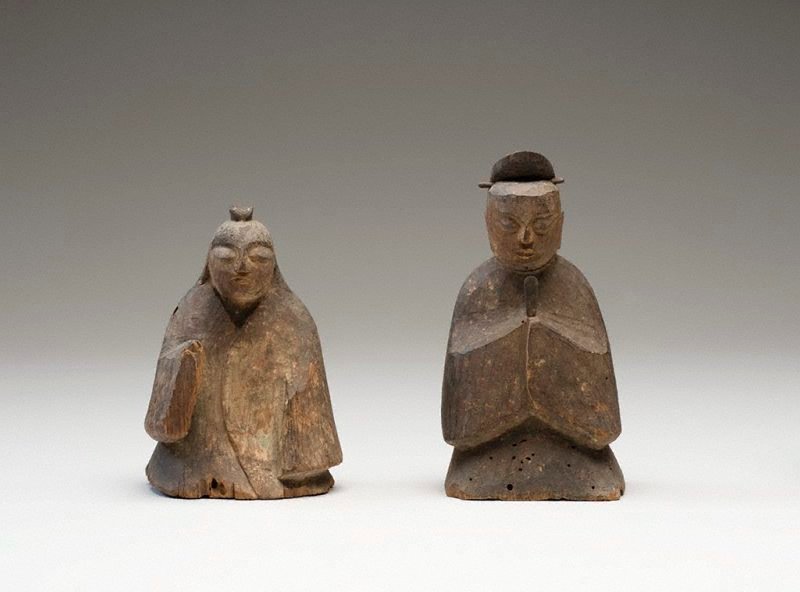
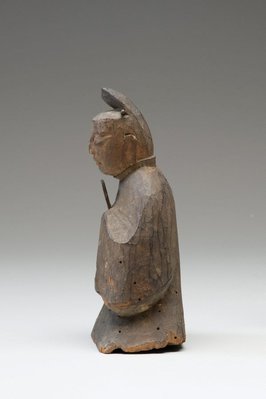
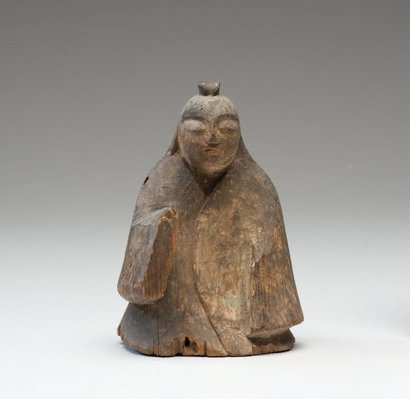
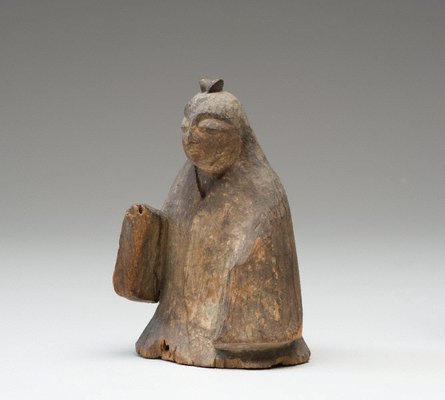
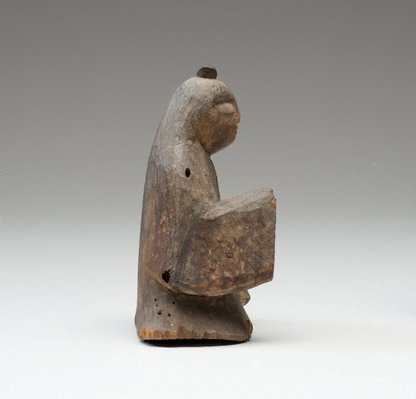
-
Details
- Other Title
- Male and female Shintô deities
- Place where the work was made
-
Japan
- Period
- Heian period 794 - 1185 → Japan
- Date
- 10th century-11th century
- Media category
- Sculpture
- Materials used
- cypress wood, traces of pigment
- Dimensions
-
a - male deity, 19.5 cm
b - female deity, 21 cm
- Credit
- Purchased with funds provided by the Asian Art Collection Benefactors 2008
- Location
- Not on display
- Accession number
- 69.2008.a-b
- Copyright
- Share
-
-
About
These small yet dignified deities are early examples of the anthropomorphizing of Shintô gods, 'kami'. The deities are rendered here as court nobles, with the men wearing tall caps and sceptres, symbol of secular authority, and the women in Tang-style robes and coiffure. Shintô sculptures are usually carved out of wood, often from old trees revered as the dwelling of the 'kami', in the so-called single-woodblock technique, 'ichiboku-zukuri', while appendages such as hands and feet and other hand-held attributes are added from separate pieces. Pigments were then applied to the surface to delineate the garments. This coating, however, seldom survives the passing of time.
In Japan, anthropomorphic representations of gods were unknown before the spread of Buddhism, although deities were symbolically associated with sacred objects, such as mirrors, swords, and jewels that became imperial insignia. Following the advent of Buddhism, Shintoists began to make images. The form of worship, however, did not change, as representations of gods were hidden away in the inner sanctuary of the Shintô shrine, adherents demonstrating their faith–at the entrance–simply by clapping their hands.
Asian Art Department, AGNSW, April 2008.
-
Places
Where the work was made
Japan
-
Exhibition history
Shown in 2 exhibitions
Buddha's Smile: Masterpieces of Japanese Buddhist Art, The Okura Shûkokan Museum of Art, , Nov 2002
Walking with gods, Art Gallery of New South Wales, Sydney, 01 Jun 2019–05 Jan 2020
-
Bibliography
Referenced in 1 publication
-
Buddha's Smile: Masterpieces of Japanese Buddhist Art, Tokyo, Nov 2002. cat.no.51, 52, p.104
-
